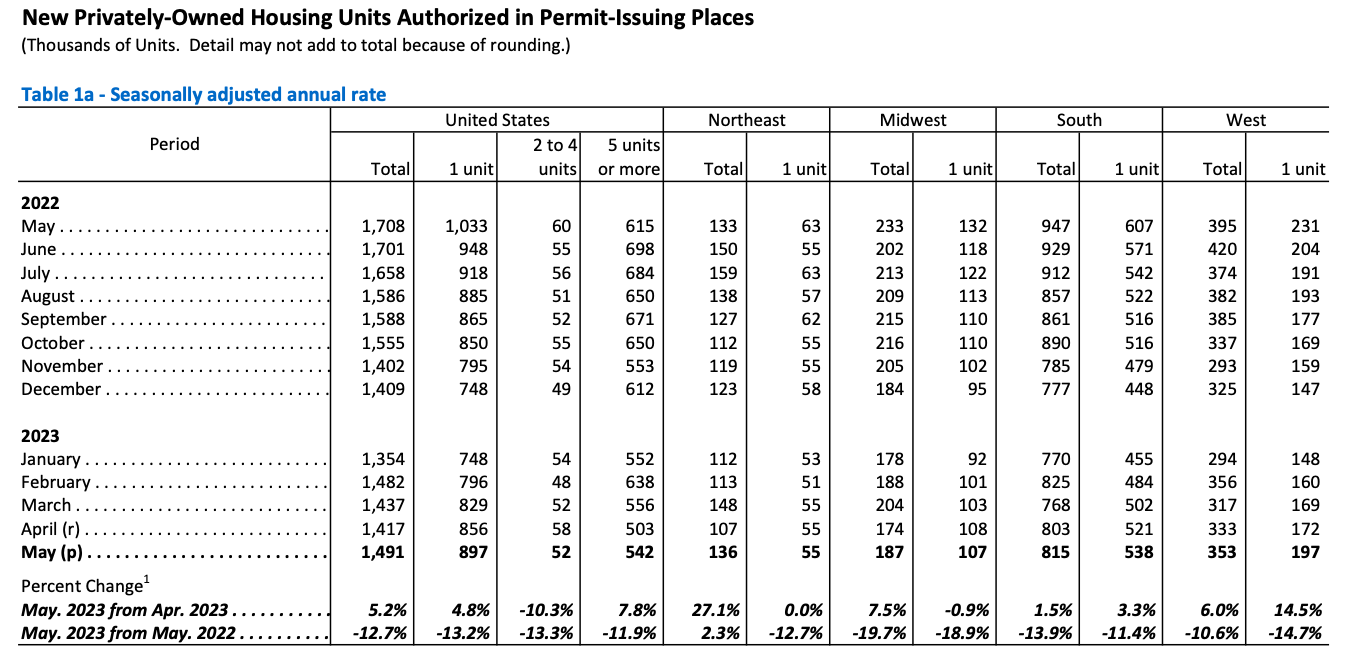What does the data mean? Fannie Mae weighs in

Housing starts shot up by more than 20% on a monthly basis according to the latest new residential construction statistics. While experts advise stakeholders not to read too much into this, they agree that the latest numbers indicate that new home construction is well on its way to recovery.
The US Census Bureau and Department of Housing and Urban Development (HUD) has released new residential construction statistics for May 2023. The monthly statistics focus on three key market indicators: new building permits authorized at the end of the month, new privately-owned housing units started, and new privately-owned housing units completed.
Building permits
The total number of new, privately‐owned housing units authorized in permit‐issuing places for May was 1,491,000 after seasonal adjustments. Almost 900,000 of these were single-family authorizations.
While the total number of new building permits represented a 5.2% monthly increase from April’s revised rate of 1,417,000, it was still 12.7% below the number of new housing permits issued in May 2022 (1,708,000).
The total number of new, single-family home permits issued this May (897,000) likewise registered growth of 4.8% from the seasonally adjusted figure for April of 856,000.

Across markets, the Northeast region experienced the largest monthly (27%) and yearly (2.3%) surges in new building permits issued in May, although the West dominated in terms of monthly growth in single-family home permits issued (14.5%).
The Census Bureau and HUD noted that authorizations of units in buildings with five units or more were at a rate of 542,000 in May – a 7.8% increase from April and 12% decrease from May the previous year.
Housing starts
New, privately‐owned housing unit starts in May were at a seasonally adjusted annual rate of 1,631,00 – a massive 21.7 percentage-point increase from the revised April number of 1,340,000, and 5.7% over the 1,543,000 new housing units started in May 2022. Roughly 997,000 of the new housing starts this May were for single-family housing units, which likewise increased month-on-month by an impressive 18.5%.
The number of buildings of five or more units started in May was 624,000.
Commenting on the statistics, Fannie Mae chief economist Doug Duncan said that the single-family starts vastly exceeded expectations in May, with 997,000 starts being the highest recorded since June 2022.
“In percentage terms, that’s the largest single-month jump since June 2020, which occurred due to a rebound from the initial shock of the COVID pandemic,” Duncan said.
While May’s results exceeded expectations, Duncan found the continued growth in new home construction consistent with improving home builder sentiment and the persistent lack of housing stock. Still, he added that some of the strength in starts was likely to be “statistical noise” – a sentiment affirmed by the US Census Bureau and HUD, which explained in their report that month‐to‐month changes in seasonally adjusted statistics often showed “irregular” movements which did not necessarily mean anything more than what they were.
“It may take three months to establish an underlying trend for building permit authorizations, six months for total starts, and six months for total completions,” the report said.
Duncan likewise preferred to keep his eyes trained on the rate trend of single-family permits, which he described as more stable and “generally more indicative”.
“[Single-family] permits series rose a more modest 4.8% to a seasonally adjusted annual rate of 897,000 [in May],” Duncan said. “While less impressive than the starts figure, single-family permits have steadily trended upward since January, indicating new home construction is indeed in recovery from its winter trough.”
As a result of the Census Bureau’s latest statistics, Fannie Mae announced that it would be revising its single-family starts forecast upward.
While multifamily starts similarly exceeded expectations – hitting a record-high since 1986, Duncan observed – Fannie Mae saw “considerably less” near-term momentum in this property sector. Duncan explained: “… [National] rent growth is slow and, despite this month’s increase, permits have generally trended down over the past year.”
Housing completions
The Census Bureau and HUD counted 1,518,000 new, privately-owned housing units completed after seasonal adjustments. This represented both a monthly and yearly increase above the revised April figure of 1,386,000 (+9.5%) and May 2022 figure of 1,446,000 (+5%).
The June report is scheduled for release on July 19.



